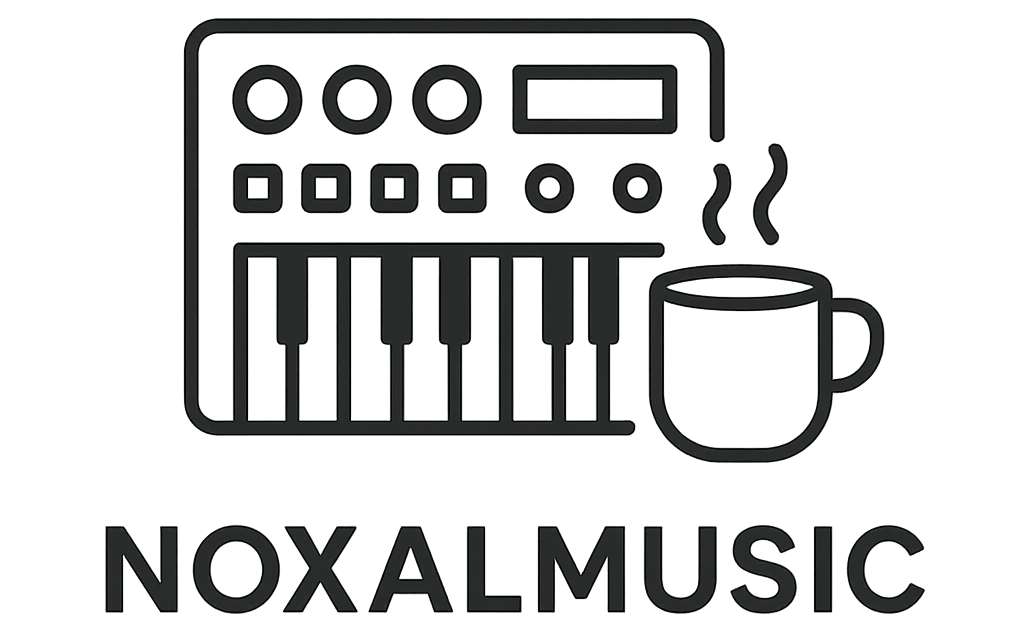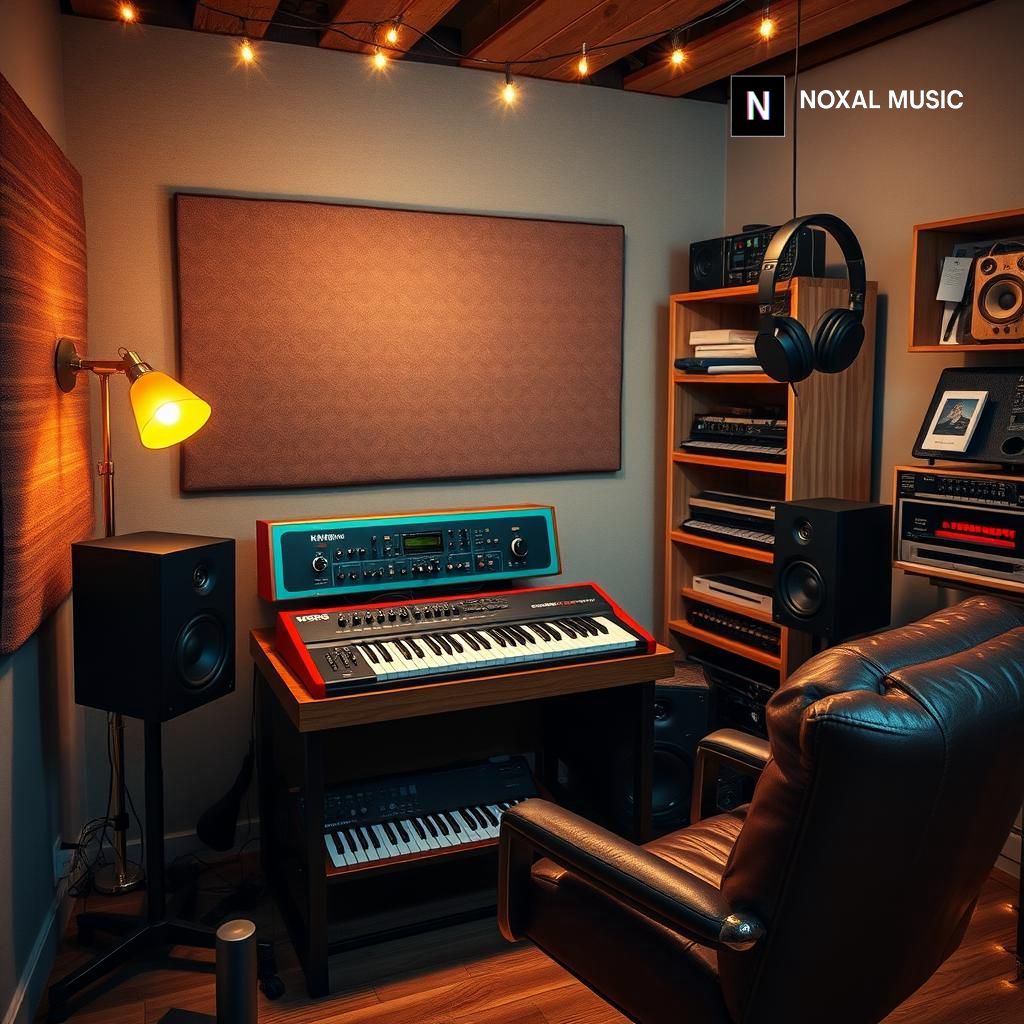The Synth’s Unrivaled Role in Music Production: How It Turbocharges Your Creative Flow
Estimated reading time: 7 minutes
- Synthesizers redefine creativity in music production.
- Active participation is key to unlocking their potential.
- Sound design allows for personal expression and emotional depth.
- Practical tips can enhance your creative workflow.
Table of Contents
- The Sonic Alchemist’s Lab: Why Synthesizers Stand Apart
- Beyond Presets: Unlocking Creative Flow Through Sound Sculpting
- The Synthesizer as a Muse: Shaping Genres and Emotions
- Practical Applications and Workflow Integration for the Modern Producer
- The Community and the Connection: Share Your Synth Stories
- Conclusion: Embrace the Infinite Sonic Canvas
The Sonic Alchemist’s Lab: Why Synthesizers Stand Apart
When we talk about creativity in music production, we often consider traditional instruments. A guitar, a piano, drums – these are fantastic tools, each with its own rich history, expressive potential, and defined sonic characteristics. You learn to play them, master their techniques, and interpret existing musical ideas or compose new ones within their established frameworks. And believe me, at Noxal, we deeply appreciate the craft and artistry involved in playing these instruments.
However, the synthesizer offers a fundamentally different proposition. Imagine a concert pianist sitting down at a grand piano. They are a master of their instrument, capable of incredible nuance and expression. But the sound of the piano itself is largely fixed. They can affect its timbre through touch, pedal work, and performance dynamics, but they cannot fundamentally alter the very waveform that creates the sound.
Now, imagine a synthesizer player or sound designer. Their instrument isn’t just about playing notes; it’s about creating the notes themselves. Instead of choosing from a predefined set of sounds (like a piano’s hammer hitting strings), they start with raw electrical oscillations or digital algorithms. They can choose a basic waveform – a pure sine wave, a buzzy sawtooth, a rich pulse wave – and then shape it, filter it, modulate it, and process it in myriad ways. This is where the magic of sound design truly begins.
I remember my first deep dive into a subtractive synthesizer. Coming from a background primarily focused on guitar and bass, the sheer freedom was almost overwhelming. Instead of just picking up my instrument and playing, I was presented with a blank canvas of sound. “What kind of sound do I want?” became “What kind of sound can I make?” This fundamental shift in perspective is what makes the synth topic in music production so vital for creative growth.
Beyond Presets: Unlocking Creative Flow Through Sound Sculpting
One of the most common misconceptions about synthesizers, especially for newcomers, is that they are all about presets. While presets can be incredibly useful starting points, and many fantastic tracks have been built on their backs, the true creative power of a synthesizer lies in moving beyond them.
Think of it like this: presets are like pre-made meals. They’re convenient, they taste good, and they serve a purpose. But sitting down with a synthesizer and building a patch from scratch is like having access to a full gourmet kitchen, every ingredient imaginable, and the freedom to invent a completely new dish. This is where the boost creativity aspect really shines.
When you’re twisting a filter cutoff knob, experimenting with different LFO rates to create rhythmic modulation, or layering multiple oscillators, you’re not just tweaking parameters; you’re engaging in a deeply intuitive, hands-on process of discovery. You might start with an idea for a massive bass sound and end up with an ethereal pad that totally changes the direction of your track. These “happy accidents” are a hallmark of synthesizer production and are often the catalyst for entirely new musical ideas.
For instance, I was once trying to replicate a classic house bassline on an analog synth. I got distracted, tweaked an envelope parameter too far, and suddenly had this percussive, almost metallic pluck. It wasn’t what I was looking for, but it instantly sparked an idea for a completely different kind of groove. That track ended up being one of my favorites, born purely out of an unexpected sonic detour. This kind of spontaneous generation of ideas is much harder to achieve with instruments that have fixed timbres.
Whether you’re working with a physical hardware unit, a powerful VST plugin in your DAW, or exploring the vast modular universe, the core principle remains: the synthesizer demands active sonic participation. It encourages experimentation, rewards curiosity, and often leads you down entirely new creative paths you hadn’t even considered.
The Synthesizer as a Muse: Shaping Genres and Emotions
It’s impossible to discuss the synth topic in music production without acknowledging its profound cultural impact. Synthesizers haven’t just contributed to music; they have defined entire genres. Imagine electronic music, techno, house music, new wave, synth-pop, or even modern hip-hop production without the iconic sounds of synthesizers. It’s unthinkable.
From Giorgio Moroder’s groundbreaking use of synths in disco that laid the foundation for modern electronic dance music, to the warm, evolving pads of Vangelis’s film scores, or the aggressive basslines that power contemporary EDM, synthesizers have consistently pushed the sonic envelope. They offer a unique palette of sounds that can evoke a vast spectrum of emotions – from the melancholic beauty of a detuned pad to the driving urgency of a resonant lead, or the dark, brooding atmosphere of an industrial texture.
We at Noxal see synthesizers not just as tools, but as active collaborators in the creative process. They challenge us to think differently about melody, harmony, rhythm, and texture. They force us to consider sound not just as an accompaniment, but as a primary expressive element. When you’re designing a unique synth sound, you’re imbuing it with character, emotion, and a sense of purpose that can profoundly influence the rest of your composition.
Consider the classic Roland TB-303, initially a commercial flop, but resurrected by the burgeoning acid house scene. Its “squelchy” resonant filter and unique accent behavior inspired a whole new genre of music. No other instrument could have provided that specific sonic identity. Or the Yamaha DX7, a digital beast that brought FM synthesis to the masses, giving us the iconic sounds of the 80s, from sparkling bells to glassy electric pianos. These aren’t just sounds; they’re cultural touchstones, indelibly linked to eras and movements.
Practical Applications and Workflow Integration for the Modern Producer
So, how can you harness this creative power in your own music production workflow? Here at Noxal, we’re always looking for actionable advice to share with our community of musicians and producers.
- Start with a Blank Slate (or Init Patch): While presets are great, challenge yourself to start with an initialized patch on your synth (hardware or VST). Begin by choosing a waveform, then slowly introduce an envelope, a filter, and some basic modulation. This forces you to make deliberate choices about every element of the sound, building your understanding and appreciation for each parameter. This is a crucial step in developing your synth techniques.
- Modulation is Your Friend: Don’t just set parameters statically. Use LFOs, envelopes, and external MIDI controllers to introduce movement and evolution into your sounds. An evolving pad, a morphing bass, or a filter sweep that reacts to your playing can add incredible depth and interest to your track. Automate these parameters within your DAW for even more complex sonic journeys. Think of the dynamic, ever-changing soundscapes you can create – sounds that live and breathe throughout your arrangement.
- Layer and Detune: Sometimes, a single synth voice isn’t enough. Layering multiple synths, perhaps an analog synth for warmth and a digital synth for clarity, can create incredibly rich and complex textures. Experiment with slight detuning between layers to create a sense of width and movement. This technique is fundamental to achieving massive synth sounds often heard in contemporary electronic music production.
- Embrace Effects Creatively: Don’t just slap a reverb on everything. Use effects as part of your sound design. A heavily distorted lead, a time-stretched delay that creates rhythmic echoes, or a unique phaser that adds swirling movement can completely transform a simple synth patch into something extraordinary. Think of effects not just as polish, but as an extension of the synthesizer itself.
- Listen Actively and Critically: Pay attention to the sounds in your favorite tracks. Can you identify the synth components? What kind of envelopes are being used? How is the filter moving? Deconstructing these elements will not only improve your listening skills but also give you ideas for your own creative production. This active listening helps you build a mental library of sonic possibilities.
I’ve personally found that dedicating specific “synth exploration” sessions, separate from full production sessions, yields the best results. Just sit down with a synth, a pair of headphones, and no specific goal other than to make interesting sounds. Record everything you do – you’ll be surprised by what gems you uncover. These sessions are where I often stumble upon unique sounds that then inspire entire new tracks.
The Community and the Connection: Share Your Synth Stories
This deep dive into the synth topic in music production is something we at Noxal believe is incredibly important for anyone involved in creating music today. Synthesizers are not just tools; they are gateways to new creative dimensions, pushing the boundaries of what music can be. They demand our curiosity, reward our experimentation, and invite us into a global community of passionate sound sculptors.
We’ve talked about how synths can boost creativity, how they compare to more traditional instruments, and offered some practical tips. But now, we want to hear from you. We’ve all got those stories: the late-night jam that unexpectedly birthed a unique patch, the forgotten setting that became the backbone of a new track, or the first time a specific synth sound completely blew your mind and changed your perspective on music.
What are your experiences? Have you had a moment where a synthesizer fundamentally changed your approach to a track or even an entire genre? What’s your go-to synth for sparking new ideas, whether it’s a specific hardware unit, a beloved VST, or an app on your phone? Invite readers to share similar experiences in the comments below. We at Noxal thrive on these conversations, on sharing knowledge and inspiration within our vibrant community.
Conclusion: Embrace the Infinite Sonic Canvas
To truly grasp the power of the synth topic in music production is to embrace an instrument that offers an unparalleled level of sonic control and creative freedom. Unlike instruments that mostly interpret predefined sounds, synthesizers empower us to invent them, to sculpt waveforms into entirely new textures and timbres. This fundamental difference is what makes them such potent catalysts for creativity, constantly pushing us to explore uncharted sonic territories.
Here at Noxal, we don’t just write about synthesizers; we live and breathe them. We believe that understanding and utilizing these incredible machines is key to unlocking your full potential as a musician and producer. They are not merely tools for making noise; they are instruments of expression, innovation, and boundless imagination.
So, go forth and explore. Twist those knobs, push those buttons, and dive into the infinite sonic canvas that a synthesizer provides. We guarantee you’ll discover not only incredible sounds but also new facets of your own creative spirit.
Ready to dive deeper into the world of electronic music production and sound design? Follow Noxal for more insightful articles, reviews, and tutorials that explore the exciting universe of synthesizers. Join our community, share your journey, and let’s continue to sculpt the future of sound together.

